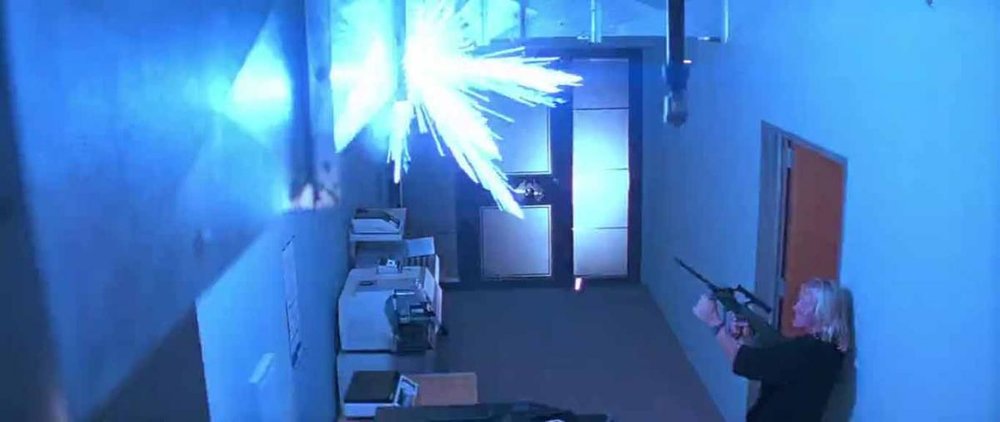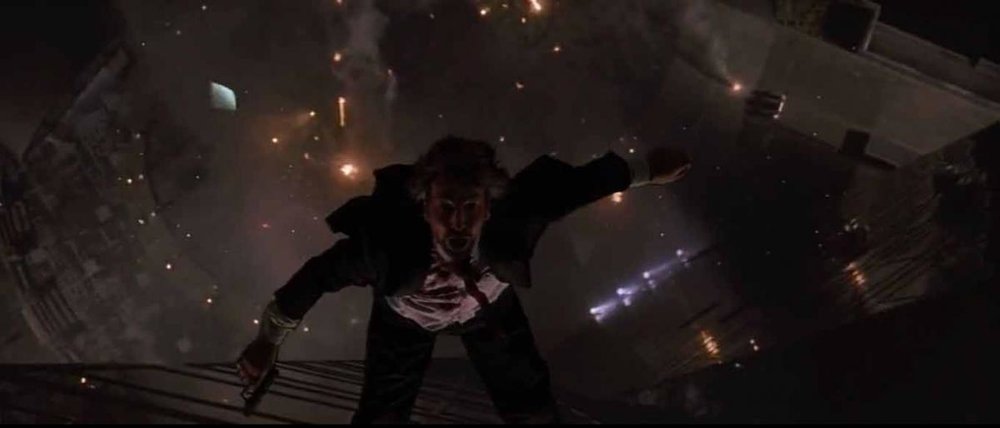
Mathew Collins
-
Posts
232 -
Joined
-
Last visited
Posts posted by Mathew Collins
-
-
Doored in lights cutting and shadowing on a frame is one of my pet peeves. Drives me crazy. Doors serve no purpose once you start diffusing away from the source. And related to that: another thing that drives me crazy is frames that are too close to the source - if there's a hotspot, we're no using the diffusion we agreed on to its full potential. If you wanted a harder source, then use less diffusion, don't go heavy and create a hot spot. :angry:
Is 'Doored' means Bandoor?
-
Hi,
I was going thru the photometrics specification given in the following link.
http://emea.rosco.com/en/product/silk-210
Is there any way to convert the lumen/lux/ fc output given in the light specification into T stops?
-Mathew Collins.
-
Thank you Satsuki, David.
-
Thank you David.
I try to follow all your posts about diffusion. I understand that size of the diffusion frame determines the softness of the light.
But did the type of the material of the diffusion have some effect on the softness or quality? Like light goes thru 216 or 400 or 430?
-
Thank you Satsuki.
Instead of filling the foamcore evenly from edge to edge
if I off-center the foamcore with PAR light,
what would be the changes in light on subject?
-
Hi,
I was assisting a Cinematographer.
In a scene he bounced an Arri4K to a foamcore. In this scenario,
What would be the difference in,
1. Move the 4k away from the formcore
2. Move the foamcore away from the subject
Please share your views.
-
-
Hi,
I was just reading the the DP James Laxton's interview.
http://filmmakermagazine.com/100603-a-one-camera-show-dp-james-laxton-on-moonlight/#.WRp4o6I3a8C
"Filmmaker: There are so many shots I’d love to ask you about because it’s such a beautifully photographed movie, but we’re running a little bit short on time so let’s just do one more. How about this pair of close-ups where Black and Kevin stare right down the lens at each other when they reconnect after a decade?
Laxton: We relied again on those LiteMat 4’s covered with unbleached muslin to give the light that warm, soft quality and that’s what you see reflected as the eyelights in their eyes. As for the down-the-barrel perspective, it was to create this immersive experience that we were hoping for, to create a first-person perspective where an audience feels that they belong inside the film."
Is 'down-the-barrel perspective' means looking directly into lens?
Wondering if any of you can share opinions?
-Collins
-
Driving in backlight to the camera avoids having the camera throw a shadow into the shot, and also minimizes the brightness difference from outside the car to the interior but you may have some issues to deal with from the sun kicking off the roof of the car into the lens. When that kick is off-camera, you can put some black tape or piece of black cloth over that spot reflecting the sun.
One issue with driving in backlight is that the reflections are brighter because the area in reflection is facing the sun.
>One issue with driving in backlight is that the reflections are brighter because the area in reflection is facing the sun.
Is the sun behind or infront of camera now?
-
Yes a pola can help reduce the strength of the reflections if the camera is at a raking angle to the glass (which it usually is to not see itself in the glass). A black flag would kill it completely though Tony Scott used to do this trick in a lot of his movies with a black flag covering the top half of the glass. Sort of unrealistic if you think about it too long but it works. Would have to be a very rigid black solid though that wouldn't budge in the wind.
Where would be the position of black flag?
-
There's no need to get hung up on correcting your lamps exactly according to the Mired system. Most people do perfectly well with Full, 1/2 and 1/4 CTO and Full ,1/2 and 1/4 CTB
Hi Stuart,
Thanks much. Now I got the answer.
-
626 LED conversion gel (Seven Eighths Digital LED CTO) has a 132 MIRED shift value.
Would the LED conversion gel is OK for HMI PARs?
-
Full CTO mired shift is about 159. So the new CT will be 1000000/(180+159)=2950K.
There's a chart on page 56 of the "Think Lee" download on that site under "resources". Just put a ruler across it.
Thanks much Mark and Michael.
When I calculated the required Miredshift, for converting 5600K to 3200K using the formula,
1000000/3200 - 1000000/5600 =133
1000000/3200=312.5
1000000/5600=178.5714285714286
I could not find a filter with 133 Miredshift in the pdf. But almost near one is 285 (Three Quarter CTO) with a value +124.
Would this calculation is correct?
-
Hi,
Lee portal says,
Full CTO Converts Daylight to Tungsten Light 6500K to 3200K
1/2 CTO Converts Daylight to Tungsten Light 6500K to 3800K
1/4 CTO Converts Daylight to Tungsten Light 6500K to 4600K
1/8 CTO Converts Daylight to Tungsten Light 6500K to 5550K
3/4 CTO Converts Daylight to Tungsten Light 6500K to 3600Khttp://www.leefilters.com/lighting/technical-list.html#&filter=conversion
What would be the change in CT when we use these filters in front of a light with 5600K( say Arri PAR 4K)
Please share your views.
-
Thanaks much Satsuki, Gregg, Dylan, Stuart.
I think focus pulller could have meassured the subject distance
from sensor plane to avoid confusion. -
Mathew,
In case you are uncertain about what FFD means...there is a contact surface where the lens mount sits on the camera mount. The distance from that surface to the film/sensor plane has to be exact. For the camera and the lens.
Thanks Gregg.
Is FFD measured from the extreme outer part of the PL mount(front) or from the inner part of the PL mount(back) to the sensor
| PL mount | |sensor
If count '|' s from the left side, Is the FFD measured
from the first '|' to sensor
or
from the second '|' to sensor ?
-
Every type of lens mount has a specified FFD to which it must be set very precisely. For PL mount, the FFD standard is 52.00mm, sometimes actually set to 51.98 or 51.99 depending on the camera.
With a special tool, a technician would check the mount. If it's off, then it needs to be adjusted back to spec. Otherwise, a properly collimated lens on that mount will not focus accurately.
Lens collimation is a whole other issue and requires more special tools. If lenses need to be adjusted, that can only be done by an experienced technician with proper tools. And that gets very expensive, unless the rental house which owns the lenses has a technician on staff. The good ones do, and the large ones have many of them.
Write your request on the back of a $20 bill and mail it to my PO Box. Just kidding! ;)
Click on my user name and go to my profile page. If you're on a mobile device, switch to the Full Version of the website. Then select send a Personal Message from the menu on the left side of the page.
>With a special tool, a technician would check the mount. If it's off, then it needs to be adjusted back to spec. Otherwise, a properly collimated lens on that mount will not focus accurately.
I think the mount is already fixed on the body while purchasing the camera. Hence the FFD is fixed.
Later do we have to change the FFD by changing to another PL mount of different thickness or adding specific type of rings at the mount?
There are some documents given here in the pdf 'Mount Change Instructions CP.2'
https://www.zeiss.co.in/camera-lenses/en_in/cine_lenses/compact_lenses/compact_prime_lenses.html
-
Assuming you are sure that the lenses are not out of collimation, then the distance between the lens flange and the sensor may be incorrect. It is critical to a few thousandths of an inch and needs to be checked.
But the lenses must be checked first. It's less likely for primes to be out than zooms as they have fewer moving parts.
The focal plane mark is clearly visible in this photograph above the "R".
If focus was measured from the mount then all the distances would be a few inches short. Since they vary it suggests a collimation or FFD problem.
Thanks Mark.
The lenses were working fine with RedONE-MX. Before we start using RedEpic-MX, the focus puller performed the above mentioned test(not sure his procedure is correct or not, because he measured the distance from the lens mount to subject.).
Whether the FP done is right or wrong, I think the FFD is different for RedONE-MX and RedEpic-MX(by seeing the shape of camera body, RedOne-MX is longer than RedEpic-MX).
In that case, is lens collimation required?
Is the FFD is set by the manufacturer or rental company's technician?
-
Thanks much Satsuki.
>Basically, the focus marks on the lens should match the measured distance. If they do not, then either the lenses are out of adjustment (collimation), or the camera's lens mount (flange focal distance, or FFD) is off. You would need to use special tools to determine which one is the problem.
What is the meaning of 'flange focal distance is off'?
Where do I have to sent PM?
-
Hi,
I was working as a camera assistant for one movie. We used Redone-MX and Carl Zeiss CP.2 lenses for almost 90% of the movie. Later there was a fault in the power chord of the camera and we started using Red Epic-MX.
Before using Epic, The focus puller tested the lenses with RedEpic.
He measured the distance from the lens mount to a subject by holding the tape near to lens mount. That was 10ft.
There he tested each lenses on Epic. Following are the focus mark for each lenses
15mm - No issues
21mm - Focus at 8ft
35mm - No issues
50mm - Focus at 9.6ft
85mm- Focus at 9.9ft
135mm- Focus at 9ft
I have few questions.
1. What is point on the camera to hold the tape?
2. In above case, is the subject distance measurement correct?
3. Is this testing is necessary while changing the camera? Is it due to the change in flange focal distance?
4. What are the other tests required while changing the camera?
5. Is there any specific charts available for tests?
Please share your inputs.
-
 1
1
-
-
Thank you David and Phil.
-
Is the that effect used to create Gunfire effect?
-
Thank you Hartman and David.
I was just reading this link.
https://medium.com/cinenation-show/cinematography-greig-fraser-asc-acs-25a087e46af4#.vadjhou6o
Here Greig Fraser is explaining a technique he used in 'Killing Them Softly'.
I am not able to understand it completely. I think he used LED light-strobbing to give gunfire effect.
Does someone have any information about this?
-
Hi,
Could someone share your knowledge about 'Diehard' movie(1988).
1. Picture1-Gunfire
2. Picture2- There is sparkle when bullet is hitting the meta sheet.
3. Picture3- Again sparkles falls down infront of Bruce Willis who is trying to move in the tunnel due the hit of bullet.
How the Gunfire and sparkles is made?
4. Picture4-Alan Rickman's character is falling down from the building..
5. Picture5- The explosion with helicopter on top of the building.
What is the technique behind these shots?
-Collins.







Bouncing light-Difference in moving the source or formcore
in General Discussion
Posted
>With the really light diffusions, it's hard to get them far enough from the light to minimize that,
Why can't we increase the distance between the light source and diffusion frame? Is there any issue?